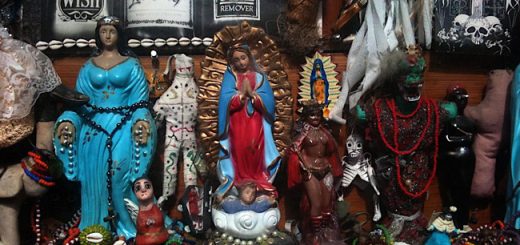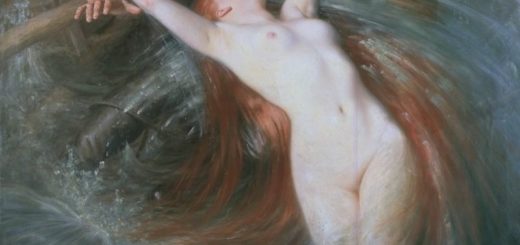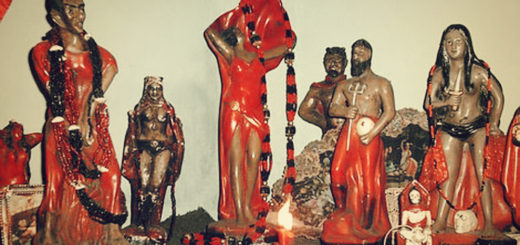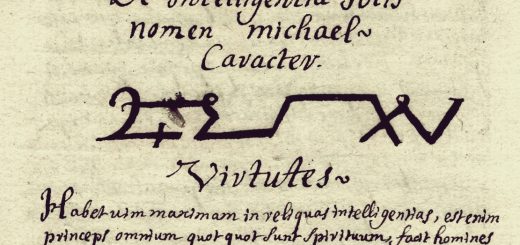Drekavac the baby phantom of Serbo-Croation folklore
Drekavac, also known as Drekawatz or Drekavats (Serbo-Croatian: Drekavac – “howler, screamer”), is a ghostly being from South Slavic folklore, often believed to be the soul of a dead unbaptized baby. According to the legend, the Drekavac’s haunting cry is said to foretell death to those who hear it from their homes.
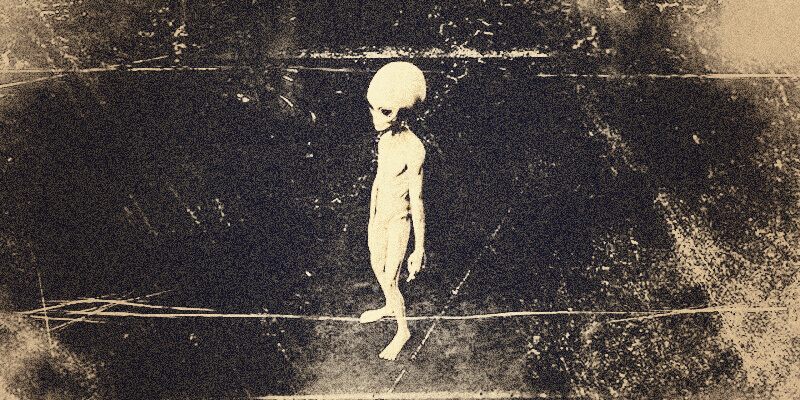
Drekavac, Drekawatz or Drekavats
Described with a thin, spindly body and a disproportionately large head, the Drekavac can take on various forms, resembling a baby or an animal. If appearing as a baby, it is said to signal the death of a human, while its animal form foretells the death of household animals.
The creature’s eerie cry can imitate sounds like a goat’s bleat, a child’s cry, a cat’s meow, or a bird’s scream, but its most striking feature is the terrifying and piercing scream it emits.
The Drekavac is believed to be most active during the Twelve Days of Christmas (25 December to 6 January) and the beginning of spring when evil spirits and demons are thought to roam freely.
It generally avoids harming its parents and is known to fear dogs, which can be used to scare it away. Additionally, it shies away from light.
While the description of the Drekavac may vary from region to region, it is generally portrayed as a quadrupedal being standing over one meter tall. Some legends suggest that they live in packs or hide in caves and tunnels.
According to belief, the Drekavac cannot be killed or defeated, but it can be redeemed by baptizing it if it appears in the form of a child.
It is said that encountering the creature in a dream may precede an actual encounter, and those who have harmed the child during their life may be at risk of being strangled by it while asleep.
Compendium 3 of the Spirit Beings in European Folklore-series offers an overview of the mysterious, sometimes beautiful and often shadowy entities of the Slavic countries, the Balkans, the Carpathians, Albania, Georgia, and the Turkish and Romani peoples. Many types of Vampires and vampiric Revenants are included – in their original state and purged of later applied disinformation. The undead are prominent in the folklore of Eastern Europe and Albania. Also typical are farm- and household-spirits such as the Domovoy, water-spirits and forest demons like the Russian Leshy, the Chuhaister, or the evil Polish Bełt, who like the Ukrainian Blud, leads travelers off their path until they are lost in the deepest part of the forest. Unique is the Russian Bannik or spirit of the bathhouse. Amongst the Slavs, some ‘demons’, like the Boginka for example, originally belonged to the pre-Christian pantheon. Eastern Europe, in contrast to its returning dead, is rich in seductive female spirits such as the Romanian Iele, the Russian Russalka, the Vila of the Eastern and Southern Slavs and the Bulgarian Samodiva. Via the Balkans, Greek influences entered Slavic culture, while there are also spirits that intersect Germanic and Nordic folklore.
Compendium 3 discusses 255 spirit beings in detail, including their alternative names, with additional references to related or subordinate beings and a unique selection of illustrations.
Also available via Amazon, Barnes & Noble and many other online stores!
The Drekavac is often featured in children’s horror stories, but in some remote areas, even adults hold onto beliefs in this creature.
Reports of strange attacks on cattle in the village of Tometino Polje in 2003, with sheep found slaughtered and drained of blood, further fueled the folklore surrounding the Drekavac.
In different regions of Serbia and Bosnia, sightings of similar creatures like Bukavac and Plakavac add to the richness of the local folklore.
You may also like to read:
Water spirits of Eastern Europe
Brook horses or Water horses of Celtic and Nordic Folklore
Leshy, the Lord of the Russian Forest



